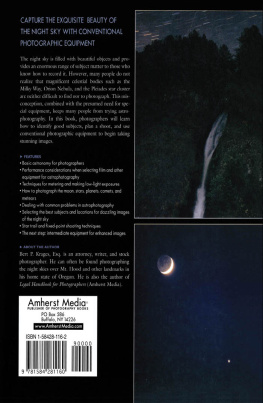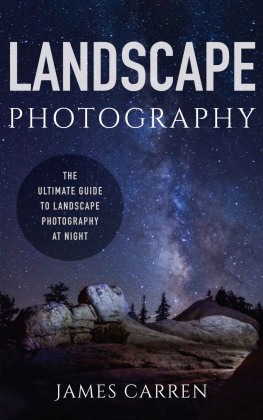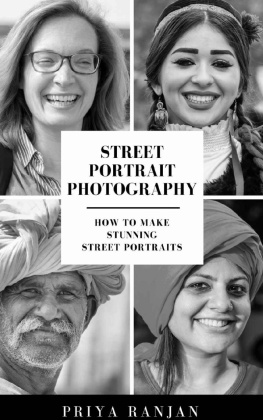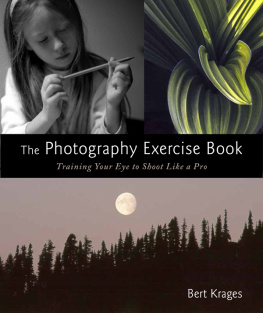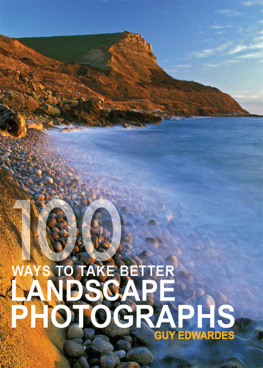Copyright 2016 by Bert P. Krages II
This is a revised edition of a book previously published under the title Photography: The Art of Composition .
All rights reserved. Copyright under Berne Copyright Convention, Universal Copyright Convention, and Pan American Copyright Convention. No part of this book may be reproduced, stored in a retrieval system, or transmitted in any form, or by any means, electronic, mechanical, photocopying, recording or otherwise, without the express written consent of the publisher, except in the case of brief excerpts in critical reviews or articles. All inquiries should be addressed to Allworth Press, 307 West 36th Street, 11th Floor, New York, NY 10018.
Allworth Press books may be purchased in bulk at special discounts for sales promotion, corporate gifts, fund-raising, or educational purposes. Special editions can also be created to specifications. For details, contact the Special Sales Department, Allworth Press, 307 West 36th Street, 11th Floor, New York, NY 10018 or .
20 19 18 17 16 5 4 3 2 1
Published by Allworth Press, an imprint of Skyhorse Publishing, Inc.
307 West 36th Street, 11th Floor, New York, NY 10018.
Allworth Press is a registered trademark of Skyhorse Publishing, Inc., a Delaware corporation.
www.allworth.com
Cover and interior design by Mary Belibasakis
Cover photo credit Bert P. Krages II
Library of Congress Cataloging-in-Publication Data is available on file.
Print ISBN: 978-1-62153-537-9
Ebook ISBN: 978-1-62153-540-9
Printed in China
To Martina, Meredith, and Jennifer
Table of Contents
Introduction
One of the best ways to improve at almost any activity is to deliberately work at improvement. Rather than approach photographic composition as a collection of rules, principles, or design elements, the book uses exercises designed to enhance and make connections between perception and the final image. The book also addresses the fundamental skills of camera handling.
This book takes a primarily inductive approach in which knowledge and improvement come about by a process of discovery. If you learn best by doing things, you will probably like this book. I would add that this book is particularly suited for persons who are willing to try things irrespective of whether they initially see any value in doing them. If you believe that you can improve skills by passive learning and without having to put forth some serious effort, this book is probably not for you. There may be parts of the book that you think are unnecessary or involve subject matter you find uninteresting. I strongly encourage the reader to reserve judgment about the exercises and the genres they encompass, and simply do the exercises. As with many areas of learning, sometimes it is impossible to understand the value of having done something until long after its completion.
Lots of books have been written on how to improve photographic skills. Many of these books take a deductive teaching approach in which the basic principles of composition are presented in a mechanical and isolated way. Generally speaking, these books adopt a framework of discussing a principle and then illustrating the principle with example photographs. Looking at images is valuable but you are not going to improve your skills merely by looking at pretty pictures. One reason for this is that the actual scene as perceived by a photographer can vary substantially from what appears in the image because of factors such as the context of the setting, the light available to the photographer, and the transient nature of the scene. Similarly, camera skills are sometimes the determining factor in whether an image is satisfactorily captured or disappointingly lost.
Of course, inspiration and a knowledge of basic principles are crucial elements in photography because they give you ideas regarding the scope of possibilities and the means to act on them. However, much like merely looking at images of muscular bodies in a fitness book will not make you stronger, merely looking at photographs is not going to take you very far in becoming the best you can be. Substantial improvement in photography generally comes from a lot of repetitions, in a variety of ways, and over a substantial period of time.
Another premise of this book is that the ability to take strong photographs is not an inherent gift that one is either born with or without. Although photographic style is an individual characteristic that will eventually show through irrespective of a persons attempt to change it, almost anyone can master their own form of photography provided they work at it hard enough. Therefore, we will be approaching this issue with the view that the ability to take photographs can always be improved, and sometimes dramatically. We will consider the fact that the processes that are effective at developing an eye for taking photographs can vary among individuals, and thus it is important to experiment with different types of photography. Likewise, we recognize that some of the aspects of achieving proficiency in photography vary by genre. The factors that are important to a landscape photographer may be almost inconsequential to a studio photographer and vice versa. Nonetheless, all forms of photography depend on the ability of photographers to perceive what is before them.
Finally, the purpose of the book is not to dictate what makes a photograph good or bad, because this is, and always should be, a personal and subjective decision. Likewise, it is not intended to be a physics or engineering textbook. Instead, the book is based on the premise that by enhancing their perceptual skills, photographers will be better able to carry out their art and craft in a way that comports with their personal philosophies and goals.
Foundations for Learning to See
The fundamental perceptual skills associated with photography are seeing, composition, and evaluation. Some photographers seem to possess a natural gift for these skills, but for others they can be baffling. There are many reasons why the ability to see a scene as it objectively appears varies among people. However, the most notable is that the eye and brain work together much differently than a lens and camera do. Likewise, although most people can recognize good composition when they see it, some photographers find it difficult to achieve a well-composed image without resorting to the rote application of the guidelines known as the rules of composition. In a similar vein, some photographers recognize that their images are somehow lacking, but find it difficult to discern why. The good news is that these skills are not especially mysterious and can be improved by understanding and developing them.
In some ways, photography is similar to physical fitnessif you really want to improve, you need to work at it. Another aspect these two things have in common is that success is far more dependent on effort and discipline than on equipment. The mere act of engaging in activity will help anyone get better, but working with a consistent plan is the best approach. Improvement will come by being deliberate in what you do and working especially hard at the things that are causing you to fall short.

A good part of photographing is simply getting out with a camera and exploring places and ideas. The more you work at being observant and finding opportunities, the more you will improve.
Recognize that nothing will give you a better feel for photographic skills than actually taking photographs. Doing this will make it clear what is not working and where your weaknesses are. Once you have identified an area in which you want to improve, you can concentrate on improving that specific area. Furthermore, it is easier to push yourself to make your images even better when you recognize what even better looks like. Good photographers are good because they have mastered the fundamentals and put themselves in situations where they can make good images. However, dont expect that every photograph you take has to be a work of art, or that every session has to result in a good image. You can practice taking photographs in almost any setting, and even taking mundane photographs can help you improve your skills so that you are better able to take advantage of more meaningful opportunities.



